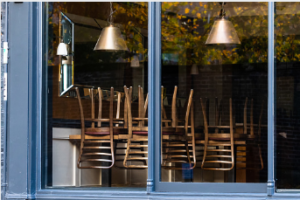Shopfitters create retail interiors for shops, hotels, bars, and other commercial buildings. The work involves creating design schemes, preparing drawings, and organising materials and labour.
This career requires good attention to detail and meeting client briefs perfectly. It also requires excellent time-management skills, ensuring materials and installation deliveries align with project milestones.
Design
Design is one of the essential aspects of shopfitting. Not only does it make a business look nice, but it also helps attract customers and increase sales. Hence, all types of shops need to have good designs.
 Designing is a process that involves drawing up design plans and blueprints for the interior of commercial properties such as restaurants, bars, retail outlets, banks, and other businesses. The designer liaises with clients, architects, electricians, and other tradespeople to ensure all requirements are met and the project runs smoothly.
Designing is a process that involves drawing up design plans and blueprints for the interior of commercial properties such as restaurants, bars, retail outlets, banks, and other businesses. The designer liaises with clients, architects, electricians, and other tradespeople to ensure all requirements are met and the project runs smoothly.
The designer will discuss the client’s brief with them and develop several different design options. These can then be presented to the client for approval.
Once the client approves the design, shopfitters Melbourne will start manufacturing. It includes preparing the materials and arranging for them to be delivered.
The designer often uses a computer-aided design (CAD) system to make arrangements and plan the installation. The CAD system allows the designer to create accurate 3D visualisations and simulate lighting, textures and other elements.
It can help the designer choose a suitable colour scheme and material for the interior. It can also save time and money by allowing them to change the designs before installing them in the building.
The design should be easy to clean, and it should also look attractive and appealing. It should be a good fit with the rest of the building, and it should also be able to meet all health and safety regulations.
Measurement
A shop fitter executes the planning, designing and installing equipment and fittings for commercial and service shops, from small corner shops to hypermarkets. In addition, they often bring interior design expertise and assist in manufacturing bespoke furniture, fittings, and signage.
A shopfitter’s job also includes estimating jobs and preparing tenders for client submission. Therefore, it is essential that the shopfitter can quote accurately and competitively to ensure clients receive excellent service.
This program makes it easier for the shopfitter to complete the work efficiently and effectively. It also allows them to prepare a realistic quotation for the client, which will help them win the job.
Shopfitters work from an office or workshop, with access to machinery, power tools, and fabrication equipment. Therefore, they may need to travel to the site for specific tasks and should wear appropriate safety clothing.
Once the design has been approved, a shopfitter must install the materials arranged in the design. It means installing shelving, walls, and other equipment to the specified dimensions. It can be challenging, but it is an essential step in shopfitting.
To ensure the shopfitting work is completed on time, shopfitters must be able to work to strict deadlines. They should be organised, have excellent hand and practical skills, and be able to concentrate on the job at hand without being distracted by other activities.
Project Management
Project management is overseeing the creation and completion of a project. It involves defining objectives, setting deadlines, and tracking progress. It also includes assessing risks and controlling them to complete the task promptly.
A solid project management team will help you achieve your business goals. They will be able to help you develop a design, provide budget estimates, and ensure that you are satisfied with the final product.
They will also ensure you meet your deadlines and stay within your budget. It will help you save money and prevent delays that could result in extra costs.
Many shopfitters Melbourne offer their services at discounted rates, which can be a great way to save on your construction costs. However, it would be best if you always researched to find the right shopfitter for your project.
Look for a shopfitter with an outstanding project portfolio that reflects your business needs. They should also have experience working with various budgets and materials.
Ask for references and testimonials from past clients to ensure they are a good fit for your business. It will help you determine whether their work fits your vision and if they have the skills to deliver on it.
You should also be aware of any conflicts of interest a shopfitter might have. For example, they may be influenced by financial concerns or personal attachments, which can cause them to make choices that don’t always serve their best interests.
Installation
A shopfitter designs and installs equipment, fittings, and signage in retail outlets to create a specific aesthetic appeal. He starts with a survey and measurement of available space, which is then prepared into design drawings.
They can help you get your project off the ground and ensure it is completed on time and within budget. They can also help you identify the best materials for your store based on your needs and desired look.
Having a well-designed store will attract potential clients. However, it will only be effective if the materials used in the construction are of high quality. It ensures the design will remain attractive and appealing for a long time.
The shopfitting industry is competitive, so you must be confident in your job skills and knowledge. In addition, you should always ensure you have the appropriate qualifications and insurance for your position.